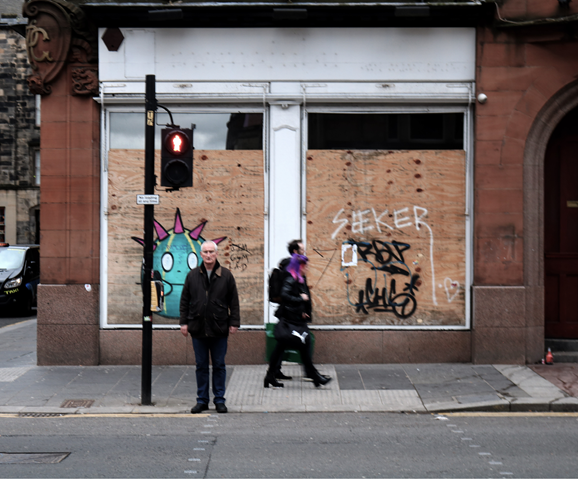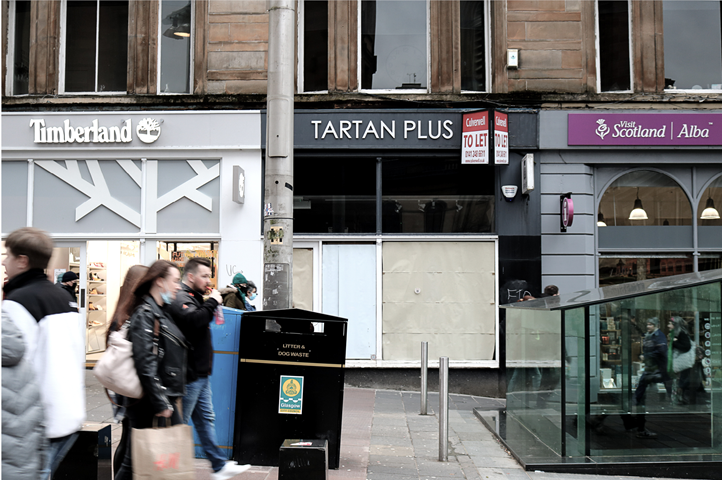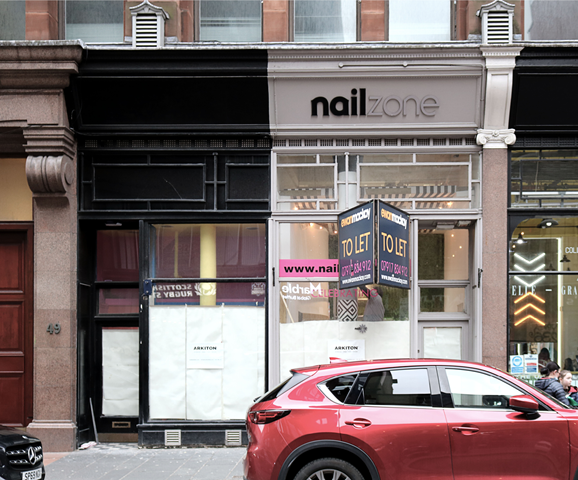Empty retail premises are scattered through Glasgow. They are invisible to people as they walk past, their minds on other things. Their contents and futures are unknown, their facades go unnoticed, forgotten seconds after the pedestrian walks past. At the large scale, they tell a story of economics, the state of Glasgow’s High Street reflecting that of much of the UK. The effects of online retail, tightening budgets and pandemic lockdowns have damaged many businesses, leading to these unused spaces in the city.
At the local scale, the businesses lost say as much as open stores do about the needs of the population. They show area demographics, needs values, taste and priorities through their failed functions.
At the smaller individual building scale, these shop fronts tell a story of a place of activity and intention. They have a history as a business with an owner and employees, their life and plans changed with the store's closure.
The bustle of the streets, the people who still walk past, not seeing the empty stores, are signs of life still in the city, of people with needs and desires. The store fronts are empty today but there are still passers-by and bustle in the city, giving hope for reuse one day.
In the final image, behind the store front and paper over the windows we can see decorating work going on inside. It is a sign of something new coming, as the empty to let store getting a new function


